-
MARKET DYNAMICS
-
\r\n4.1. Overview
-
\r\n4.2. Drivers
-
\r\n4.3. Restraints
-
\r\n4.4.
-
Opportunities
-
\r\n5. MARKET FACTOR ANALYSIS
-
\r\n5.1. Value Chain Analysis
-
\r\n5.2.
-
Porter’s Five Forces Analysis
-
\r\n5.2.1. Bargaining Power of Suppliers
-
\r\n5.2.2.
-
Bargaining Power of Buyers
-
\r\n5.2.3. Threat of New Entrants
-
\r\n5.2.4.
-
Threat of Substitutes
-
\r\n5.2.5. Intensity of Rivalry
-
\r\n5.3. COVID-19
-
Impact Analysis
-
\r\n5.3.1. Market Impact Analysis
-
\r\n5.3.2. Regional
-
Impact
-
\r\n5.3.3. Opportunity and Threat Analysis
-
\r\n6. GLOBAL BENZYL
-
ALCOHOL MARKET, BY PURITY
-
\r\n6.1. Overview
-
\r\n6.2. Purity Higher than
-
99.5%
-
\r\n6.3. Purity in Between 99-99.5%
-
\r\n6.4. Purity Less than
-
99%
-
\r\n7. GLOBAL BENZYL ALCOHOL MARKET, BY GRADE
-
\r\n7.1. Overview
-
\r\n7.2.
-
Industrial Grade
-
\r\n7.3. Food Grade
-
\r\n7.4. Pharmaceutical Grade
-
\r\n7.5.
-
Others
-
\r\n8. GLOBAL BENZYL ALCOHOL MARKET, BY APPLICATION
-
\r\n8.1.
-
Overview
-
\r\n8.2. Dielectric Solvent
-
\r\n8.3. Bacteriostatic Preservative
-
\r\n8.4.
-
Cleaning Agent
-
\r\n8.5. Epoxy Resins
-
\r\n8.6. Synthetic Solvent
-
\r\n8.7.
-
Others
-
\r\n9. GLOBAL BENZYL ALCOHOL MARKET, BY END USER
-
\r\n9.1. Overview
-
\r\n9.2.
-
Food and Beverages
-
\r\n9.3. Paints and Coating
-
\r\n9.4. Pharmaceuticals
-
\r\n9.5.
-
Others
-
\r\n10. GLOBAL BENZYL ALCOHOL MARKET, BY REGION
-
\r\n10.1. Overview
-
\r\n10.1.
-
North America
-
\r\n10.1.1. US
-
\r\n10.1.2. Canada
-
\r\n10.2. Europe
-
\r\n10.2.1.
-
Germany
-
\r\n10.2.2. France
-
\r\n10.2.3. UK
-
\r\n10.2.4. Italy
-
\r\n10.2.5.
-
Spain
-
\r\n10.2.6. Rest of Europe
-
\r\n10.3. Asia-Pacific
-
\r\n10.3.1.
-
China
-
\r\n10.3.2. India
-
\r\n10.3.3. Japan
-
\r\n10.3.4. South Korea
-
\r\n10.3.5.
-
Australia
-
\r\n10.3.6. Rest of Asia-Pacific
-
\r\n10.4. Rest of the World
-
\r\n10.4.1.
-
Middle East
-
\r\n10.4.2. Africa
-
\r\n10.4.3. Latin America
-
\r\n11.
-
COMPETITIVE LANDSCAPE
-
\r\n11.1. Overview
-
\r\n11.2. Competitive Analysis
-
\r\n11.3.
-
Market Share Analysis
-
\r\n11.4. Major Growth Strategy in the Global Benzyl
-
alcohol Market,
-
\r\n11.5. Competitive Benchmarking
-
\r\n11.6. Leading
-
Players in Terms of Number of Developments in the Global Benzyl alcohol Market,
-
\r\n11.7.
-
Key developments and Growth Strategies
-
\r\n11.7.1. New Product Launch/Service
-
Deployment
-
\r\n11.7.2. Merger & Acquisitions
-
\r\n11.7.3. Joint Ventures
-
\r\n11.8.
-
Major Players Financial Matrix
-
\r\n11.8.1. Sales & Operating Income, 2022
-
\r\n11.8.2.
-
Major Players R&D Expenditure. 2022
-
\r\n12. COMPANY PROFILES
-
\r\n12.1.
-
Merck KGaA (Germany)
-
\r\n12.1.1. Company Overview
-
\r\n12.1.2. Financial
-
Overview
-
\r\n12.1.3. Products Offered
-
\r\n12.1.4. Key Developments
-
\r\n12.1.5.
-
SWOT Analysis
-
\r\n12.1.6. Key Strategies
-
\r\n12.2. Thermo Fisher Scientific
-
Inc. (U.S.)
-
\r\n12.2.1. Company Overview
-
\r\n12.2.2. Financial Overview
-
\r\n12.2.3.
-
Products Offered
-
\r\n12.2.4. Key Developments
-
\r\n12.2.5. SWOT Analysis
-
\r\n12.2.6.
-
Key Strategies
-
\r\n12.3. HUBEI GREENHOME FINE CHEMICAL CO., LTD (China)
-
\r\n12.3.1.
-
Company Overview
-
\r\n12.3.2. Financial Overview
-
\r\n12.3.3. Products
-
Offered
-
\r\n12.3.4. Key Developments
-
\r\n12.3.5. SWOT Analysis
-
\r\n12.3.6.
-
Key Strategies
-
\r\n12.4. Emerald Performance Materials (U.S.)
-
\r\n12.4.1.
-
Company Overview
-
\r\n12.4.2. Financial Overview
-
\r\n12.4.3. Products
-
Offered
-
\r\n12.4.4. Key Developments
-
\r\n12.4.5. SWOT Analysis
-
\r\n12.4.6.
-
Key Strategies
-
\r\n12.5. Alfa Aesar (U.S.)
-
\r\n12.5.1. Company Overview
-
\r\n12.5.2.
-
Financial Overview
-
\r\n12.5.3. Products Offered
-
\r\n12.5.4. Key Developments
-
\r\n12.5.5.
-
SWOT Analysis
-
\r\n12.5.6. Key Strategies
-
\r\n12.6. Wuhan Biet Co., Ltd.
-
(China)
-
\r\n12.6.1. Company Overview
-
\r\n12.6.2. Financial Overview
-
\r\n12.6.3.
-
Products Offered
-
\r\n12.6.4. Key Developments
-
\r\n12.6.5. SWOT Analysis
-
\r\n12.6.6.
-
Key Strategies
-
\r\n12.7. Gujarat Alkalies and Chemical Limited (India)
-
\r\n12.7.1.
-
Company Overview
-
\r\n12.7.2. Financial Overview
-
\r\n12.7.3. Products
-
Offered
-
\r\n12.7.4. Key Developments
-
\r\n12.7.5. SWOT Analysis
-
\r\n12.7.6.
-
Key Strategies
-
\r\n12.8. Tata Chemicals Ltd. (India)
-
\r\n12.8.1. Company
-
Overview
-
\r\n12.8.2. Financial Overview
-
\r\n12.8.3. Products Offered
-
\r\n12.8.4.
-
Key Developments
-
\r\n12.8.5. SWOT Analysis
-
\r\n12.8.6. Key Strategies
-
\r\n12.9.
-
FINAR CHEMICALS (India)
-
\r\n12.9.1. Company Overview
-
\r\n12.9.2. Financial
-
Overview
-
\r\n12.9.3. Products Offered
-
\r\n12.9.4. Key Developments
-
\r\n12.9.5.
-
SWOT Analysis
-
\r\n12.9.6. Key Strategies
-
\r\n12.10. Elan Chemical (U.S.),
-
INEOS (U.K.)
-
\r\n12.10.1. Company Overview
-
\r\n12.10.2. Financial Overview
-
\r\n12.10.3.
-
Products Offered
-
\r\n12.10.4. Key Developments
-
\r\n12.10.5. SWOT Analysis
-
\r\n12.10.6.
-
Key Strategies
-
\r\n12.11. INEOS (U.K.)
-
\r\n12.11.1. Company Overview
-
\r\n12.11.2.
-
Financial Overview
-
\r\n12.11.3. Products Offered
-
\r\n12.11.4. Key Developments
-
\r\n12.11.5.
-
SWOT Analysis
-
\r\n12.11.6. Key Strategies
-
\r\n13. APPENDIX
-
\r\n13.1.
-
References
-
\r\n13.2. Related Reports
-
\r\n
-
\r\nLIST OF TABLES
-
\r\nTABLE
-
GLOBAL BENZYL ALCOHOL MARKET, SYNOPSIS, 2025 - 2034
-
\r\nTABLE 2 GLOBAL BENZYL
-
ALCOHOL MARKET, ESTIMATES & FORECAST, 2025 - 2034 (USD BILLION)
-
\r\nTABLE
-
GLOBAL BENZYL ALCOHOL MARKET, BY PURITY, 2025 - 2034 (USD BILLION)
-
\r\nTABLE
-
GLOBAL BENZYL ALCOHOL MARKET, BY GRADE, 2025 - 2034 (USD BILLION)
-
\r\nTABLE
-
GLOBAL BENZYL ALCOHOL MARKET, BY APPLICATION, 2025 - 2034 (USD BILLION)
-
\r\nTABLE
-
GLOBAL BENZYL ALCOHOL MARKET, BY END USER, 2025 - 2034 (USD BILLION)
-
\r\nTABLE
-
NORTH AMERICA: BENZYL ALCOHOL MARKET, BY PURITY, 2025 - 2034 (USD BILLION)
-
\r\nTABLE
-
NORTH AMERICA: BENZYL ALCOHOL MARKET, BY GRADE, 2025 - 2034 (USD BILLION)
-
\r\nTABLE
-
NORTH AMERICA: BENZYL ALCOHOL MARKET, BY APPLICATION, 2025 - 2034 (USD BILLION)
-
\r\nTABLE
-
NORTH AMERICA: BENZYL ALCOHOL MARKET, BY END USER, 2025 - 2034 (USD BILLION)
-
\r\nTABLE
-
US: BENZYL ALCOHOL MARKET, BY PURITY, 2025 - 2034 (USD BILLION)
-
\r\nTABLE
-
US: BENZYL ALCOHOL MARKET, BY GRADE, 2025 - 2034 (USD BILLION)
-
\r\nTABLE
-
US: BENZYL ALCOHOL MARKET, BY APPLICATION, 2025 - 2034 (USD BILLION)
-
\r\nTABLE
-
US: BENZYL ALCOHOL MARKET, BY END USER, 2025 - 2034 (USD BILLION)
-
\r\nTABLE
-
CANADA: BENZYL ALCOHOL MARKET, BY PURITY, 2025 - 2034 (USD BILLION)
-
\r\nTABLE
-
CANADA: BENZYL ALCOHOL MARKET, BY GRADE, 2025 - 2034 (USD BILLION)
-
\r\nTABLE
-
CANADA: BENZYL ALCOHOL MARKET, BY APPLICATION, 2025 - 2034 (USD BILLION)
-
\r\nTABLE
-
CANADA: BENZYL ALCOHOL MARKET, BY END USER, 2025 - 2034 (USD BILLION)
-
\r\nTABLE
-
EUROPE: BENZYL ALCOHOL MARKET, BY PURITY, 2025 - 2034 (USD BILLION)
-
\r\nTABLE
-
EUROPE: BENZYL ALCOHOL MARKET, BY GRADE, 2025 - 2034 (USD BILLION)
-
\r\nTABLE
-
EUROPE: BENZYL ALCOHOL MARKET, BY APPLICATION, 2025 - 2034 (USD BILLION)
-
\r\nTABLE
-
EUROPE: BENZYL ALCOHOL MARKET, BY END USER, 2025 - 2034 (USD BILLION)
-
\r\nTABLE
-
GERMANY: BENZYL ALCOHOL MARKET, BY PURITY, 2025 - 2034 (USD BILLION)
-
\r\nTABLE
-
GERMANY: BENZYL ALCOHOL MARKET, BY GRADE, 2025 - 2034 (USD BILLION)
-
\r\nTABLE
-
GERMANY: BENZYL ALCOHOL MARKET, BY APPLICATION, 2025 - 2034 (USD BILLION)
-
\r\nTABLE
-
GERMANY: BENZYL ALCOHOL MARKET, BY END USER, 2025 - 2034 (USD BILLION)
-
\r\nTABLE
-
FRANCE: BENZYL ALCOHOL MARKET, BY PURITY, 2025 - 2034 (USD BILLION)
-
\r\nTABLE
-
FRANCE: BENZYL ALCOHOL MARKET, BY GRADE, 2025 - 2034 (USD BILLION)
-
\r\nTABLE
-
FRANCE: BENZYL ALCOHOL MARKET, BY APPLICATION, 2025 - 2034 (USD BILLION)
-
\r\nTABLE
-
FRANCE: BENZYL ALCOHOL MARKET, BY END USER, 2025 - 2034 (USD BILLION)
-
\r\nTABLE
-
ITALY: BENZYL ALCOHOL MARKET, BY PURITY, 2025 - 2034 (USD BILLION)
-
\r\nTABLE
-
ITALY: BENZYL ALCOHOL MARKET, BY GRADE, 2025 - 2034 (USD BILLION)
-
\r\nTABLE
-
ITALY: BENZYL ALCOHOL MARKET, BY APPLICATION, 2025 - 2034 (USD BILLION)
-
\r\nTABLE
-
ITALY: BENZYL ALCOHOL MARKET, BY END USER, 2025 - 2034 (USD BILLION)
-
\r\nTABLE
-
SPAIN: BENZYL ALCOHOL MARKET, BY PURITY, 2025 - 2034 (USD BILLION)
-
\r\nTABLE
-
SPAIN: BENZYL ALCOHOL MARKET, BY GRADE, 2025 - 2034 (USD BILLION)
-
\r\nTABLE
-
SPAIN: BENZYL ALCOHOL MARKET, BY APPLICATION, 2025 - 2034 (USD BILLION)
-
\r\nTABLE
-
SPAIN: BENZYL ALCOHOL MARKET, BY END USER, 2025 - 2034 (USD BILLION)
-
\r\nTABLE
-
UK: BENZYL ALCOHOL MARKET, BY PURITY, 2025 - 2034 (USD BILLION)
-
\r\nTABLE
-
UK: BENZYL ALCOHOL MARKET, BY GRADE, 2025 - 2034 (USD BILLION)
-
\r\nTABLE
-
UK: BENZYL ALCOHOL MARKET, BY APPLICATION, 2025 - 2034 (USD BILLION)
-
\r\nTABLE
-
UK: BENZYL ALCOHOL MARKET, BY END USER, 2025 - 2034 (USD BILLION)
-
\r\nTABLE
-
REST OF EUROPE: BENZYL ALCOHOL MARKET, BY PURITY, 2025 - 2034 (USD BILLION)
-
\r\nTABLE
-
REST OF EUROPE: BENZYL ALCOHOL MARKET, BY GRADE, 2025 - 2034 (USD BILLION)
-
\r\nTABLE
-
REST OF EUROPE: BENZYL ALCOHOL MARKET, BY APPLICATION, 2025 - 2034 (USD BILLION)
-
\r\nTABLE
-
REST OF EUROPE: BENZYL ALCOHOL MARKET, BY END USER, 2025 - 2034 (USD BILLION)
-
\r\nTABLE
-
ASIA-PACIFIC: BENZYL ALCOHOL MARKET, BY PURITY, 2025 - 2034 (USD BILLION)
-
\r\nTABLE
-
ASIA-PACIFIC: BENZYL ALCOHOL MARKET, BY GRADE, 2025 - 2034 (USD BILLION)
-
\r\nTABLE
-
ASIA-PACIFIC: BENZYL ALCOHOL MARKET, BY APPLICATION, 2025 - 2034 (USD BILLION)
-
\r\nTABLE
-
ASIA-PACIFIC: BENZYL ALCOHOL MARKET, BY END USER, 2025 - 2034 (USD BILLION)
-
\r\nTABLE
-
JAPAN: BENZYL ALCOHOL MARKET, BY PURITY, 2025 - 2034 (USD BILLION)
-
\r\nTABLE
-
JAPAN: BENZYL ALCOHOL MARKET, BY GRADE, 2025 - 2034 (USD BILLION)
-
\r\nTABLE
-
JAPAN: BENZYL ALCOHOL MARKET, BY APPLICATION, 2025 - 2034 (USD BILLION)
-
\r\nTABLE
-
JAPAN: BENZYL ALCOHOL MARKET, BY END USER, 2025 - 2034 (USD BILLION)
-
\r\nTABLE
-
CHINA: BENZYL ALCOHOL MARKET, BY PURITY, 2025 - 2034 (USD BILLION)
-
\r\nTABLE
-
CHINA: BENZYL ALCOHOL MARKET, BY GRADE, 2025 - 2034 (USD BILLION)
-
\r\nTABLE
-
CHINA: BENZYL ALCOHOL MARKET, BY APPLICATION, 2025 - 2034 (USD BILLION)
-
\r\nTABLE
-
CHINA: BENZYL ALCOHOL MARKET, BY END USER, 2025 - 2034 (USD BILLION)
-
\r\nTABLE
-
INDIA: BENZYL ALCOHOL MARKET, BY PURITY, 2025 - 2034 (USD BILLION)
-
\r\nTABLE
-
INDIA: BENZYL ALCOHOL MARKET, BY GRADE, 2025 - 2034 (USD BILLION)
-
\r\nTABLE
-
INDIA: BENZYL ALCOHOL MARKET, BY APPLICATION, 2025 - 2034 (USD BILLION)
-
\r\nTABLE
-
INDIA: BENZYL ALCOHOL MARKET, BY END USER, 2025 - 2034 (USD BILLION)
-
\r\nTABLE
-
AUSTRALIA: BENZYL ALCOHOL MARKET, BY PURITY, 2025 - 2034 (USD BILLION)
-
\r\nTABLE
-
AUSTRALIA: BENZYL ALCOHOL MARKET, BY GRADE, 2025 - 2034 (USD BILLION)
-
\r\nTABLE
-
AUSTRALIA: BENZYL ALCOHOL MARKET, BY APPLICATION, 2025 - 2034 (USD BILLION)
-
\r\nTABLE
-
AUSTRALIA: BENZYL ALCOHOL MARKET, BY END USER, 2025 - 2034 (USD BILLION)
-
\r\nTABLE
-
SOUTH KOREA: BENZYL ALCOHOL MARKET, BY PURITY, 2025 - 2034 (USD BILLION)
-
\r\nTABLE
-
SOUTH KOREA: BENZYL ALCOHOL MARKET, BY GRADE, 2025 - 2034 (USD BILLION)
-
\r\nTABLE
-
SOUTH KOREA: BENZYL ALCOHOL MARKET, BY APPLICATION, 2025 - 2034 (USD BILLION)
-
\r\nTABLE
-
SOUTH KOREA: BENZYL ALCOHOL MARKET, BY END USER, 2025 - 2034 (USD BILLION)
-
\r\nTABLE
-
REST OF ASIA-PACIFIC: BENZYL ALCOHOL MARKET, BY PURITY, 2025 - 2034 (USD BILLION)
-
\r\nTABLE
-
REST OF ASIA-PACIFIC: BENZYL ALCOHOL MARKET, BY GRADE, 2025 - 2034 (USD BILLION)
-
\r\nTABLE
-
REST OF ASIA-PACIFIC: BENZYL ALCOHOL MARKET, BY APPLICATION, 2025 - 2034 (USD
-
BILLION)
-
\r\nTABLE 56 REST OF ASIA-PACIFIC: BENZYL ALCOHOL MARKET, BY END
-
USER, 2025 - 2034 (USD BILLION)
-
\r\nTABLE 57 REST OF THE WORLD: BENZYL ALCOHOL
-
MARKET, BY PURITY, 2025 - 2034 (USD BILLION)
-
\r\nTABLE 58 REST OF THE WORLD:
-
BENZYL ALCOHOL MARKET, BY GRADE, 2025 - 2034 (USD BILLION)
-
\r\nTABLE 59 REST
-
OF THE WORLD: BENZYL ALCOHOL MARKET, BY APPLICATION, 2025 - 2034 (USD BILLION)
-
\r\nTABLE
-
REST OF THE WORLD: BENZYL ALCOHOL MARKET, BY END USER, 2025 - 2034 (USD BILLION)
-
\r\nTABLE
-
MIDDLE EAST: BENZYL ALCOHOL MARKET, BY PURITY, 2025 - 2034 (USD BILLION)
-
\r\nTABLE
-
MIDDLE EAST: BENZYL ALCOHOL MARKET, BY GRADE, 2025 - 2034 (USD BILLION)
-
\r\nTABLE
-
MIDDLE EAST: BENZYL ALCOHOL MARKET, BY APPLICATION, 2025 - 2034 (USD BILLION)
-
\r\nTABLE
-
MIDDLE EAST: BENZYL ALCOHOL MARKET, BY END USER, 2025 - 2034 (USD BILLION)
-
\r\nTABLE
-
AFRICA: BENZYL ALCOHOL MARKET, BY PURITY, 2025 - 2034 (USD BILLION)
-
\r\nTABLE
-
AFRICA: BENZYL ALCOHOL MARKET, BY GRADE, 2025 - 2034 (USD BILLION)
-
\r\nTABLE
-
AFRICA: BENZYL ALCOHOL MARKET, BY APPLICATION, 2025 - 2034 (USD BILLION)
-
\r\nTABLE
-
AFRICA: BENZYL ALCOHOL MARKET, BY END USER, 2025 - 2034 (USD BILLION)
-
\r\nTABLE
-
LATIN AMERICA: BENZYL ALCOHOL MARKET, BY PURITY, 2025 - 2034 (USD BILLION)
-
\r\nTABLE
-
LATIN AMERICA: BENZYL ALCOHOL MARKET, BY GRADE, 2025 - 2034 (USD BILLION)
-
\r\nTABLE
-
LATIN AMERICA: BENZYL ALCOHOL MARKET, BY APPLICATION, 2025 - 2034 (USD BILLION)
-
\r\nTABLE
-
LATIN AMERICA: BENZYL ALCOHOL MARKET, BY END USER, 2025 - 2034 (USD BILLION)
-
\r\nLIST
-
OF FIGURES
-
\r\nFIGURE 1 RESEARCH PROCESS
-
\r\nFIGURE 2 MARKET STRUCTURE
-
FOR THE GLOBAL BENZYL ALCOHOL MARKET
-
\r\nFIGURE 3 MARKET DYNAMICS FOR THE
-
GLOBAL BENZYL ALCOHOL MARKET
-
\r\nFIGURE 4 GLOBAL BENZYL ALCOHOL MARKET, SHARE
-
(%), BY PURITY, 2022
-
\r\nFIGURE 5 GLOBAL BENZYL ALCOHOL MARKET, SHARE (%),
-
BY GRADE, 2022
-
\r\nFIGURE 6 GLOBAL BENZYL ALCOHOL MARKET, SHARE (%), BY APPLICATION,
-
\r\nFIGURE 7 GLOBAL BENZYL ALCOHOL MARKET, SHARE (%), BY END USER, 2022
-
\r\nFIGURE
-
GLOBAL BENZYL ALCOHOL MARKET, SHARE (%), BY REGION, 2022
-
\r\nFIGURE 9 NORTH
-
AMERICA: BENZYL ALCOHOL MARKET, SHARE (%), BY REGION, 2022
-
\r\nFIGURE 10 EUROPE:
-
BENZYL ALCOHOL MARKET, SHARE (%), BY REGION, 2022
-
\r\nFIGURE 11 ASIA-PACIFIC:
-
BENZYL ALCOHOL MARKET, SHARE (%), BY REGION, 2022
-
\r\nFIGURE 12 REST OF THE
-
WORLD: BENZYL ALCOHOL MARKET, SHARE (%), BY REGION, 2022
-
\r\nFIGURE 13 GLOBAL
-
BENZYL ALCOHOL MARKET: COMPANY SHARE ANALYSIS, 2022 (%)
-
\r\nFIGURE 14 MERCK
-
KGAA (GERMANY): FINANCIAL OVERVIEW SNAPSHOT
-
\r\nFIGURE 15 MERCK KGAA (GERMANY):
-
SWOT ANALYSIS
-
\r\nFIGURE 16 THERMO FISHER SCIENTIFIC INC. (U.S.): FINANCIAL
-
OVERVIEW SNAPSHOT
-
\r\nFIGURE 17 THERMO FISHER SCIENTIFIC INC. (U.S.): SWOT
-
ANALYSIS
-
\r\nFIGURE 18 HUBEI GREENHOME FINE CHEMICAL CO., LTD (CHINA): FINANCIAL
-
OVERVIEW SNAPSHOT
-
\r\nFIGURE 19 HUBEI GREENHOME FINE CHEMICAL CO., LTD (CHINA):
-
SWOT ANALYSIS
-
\r\nFIGURE 20 EMERALD PERFORMANCE MATERIALS (U.S.): FINANCIAL
-
OVERVIEW SNAPSHOT
-
\r\nFIGURE 21 EMERALD PERFORMANCE MATERIALS (U.S.): SWOT
-
ANALYSIS
-
\r\nFIGURE 22 ALFA AESAR (U.S.).: FINANCIAL OVERVIEW SNAPSHOT
-
\r\nFIGURE
-
ALFA AESAR (U.S.).: SWOT ANALYSIS
-
\r\nFIGURE 24 GUJARAT ALKALIES AND CHEMICAL
-
LIMITED (INDIA): FINANCIAL OVERVIEW SNAPSHOT
-
\r\nFIGURE 25 GUJARAT ALKALIES
-
AND CHEMICAL LIMITED (INDIA): SWOT ANALYSIS
-
\r\nFIGURE 26 TATA CHEMICALS LTD.
-
(INDIA): FINANCIAL OVERVIEW SNAPSHOT
-
\r\nFIGURE 27 TATA CHEMICALS LTD. (INDIA):
-
SWOT ANALYSIS
-
\r\nFIGURE 28 FINAR CHEMICALS (INDIA): FINANCIAL OVERVIEW SNAPSHOT
-
\r\nFIGURE
-
FINAR CHEMICALS (INDIA): SWOT ANALYSIS
-
\r\nFIGURE 30 ELAN CHEMICAL (U.S.):
-
FINANCIAL OVERVIEW SNAPSHOT
-
\r\nFIGURE 31 ELAN CHEMICAL (U.S.): SWOT ANALYSIS
-
\r\nFIGURE
-
INEOS (U.K.): FINANCIAL OVERVIEW SNAPSHOT
-
\r\nFIGURE 33 INEOS (U.K.): SWOT
-
ANALYSIS
-
\r\nFIGURE 34 WUHAN BIET CO., LTD. (CHINA): FINANCIAL OVERVIEW SNAPSHOT
-
\r\nFIGURE
-
WUHAN BIET CO., LTD. (CHINA)): SWOT ANALYSIS


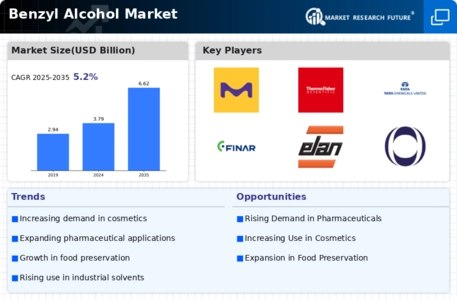
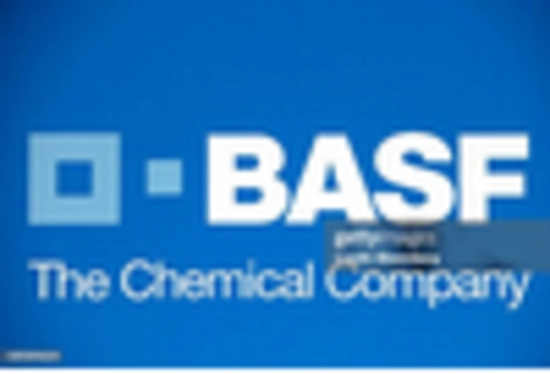
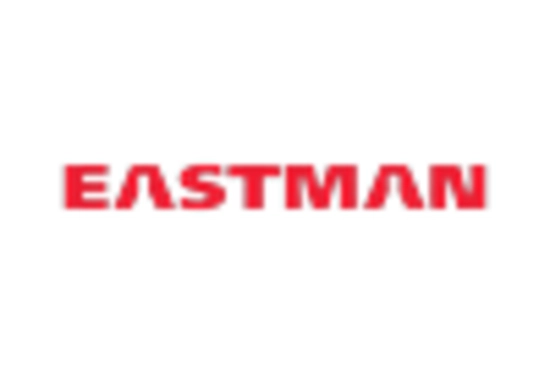
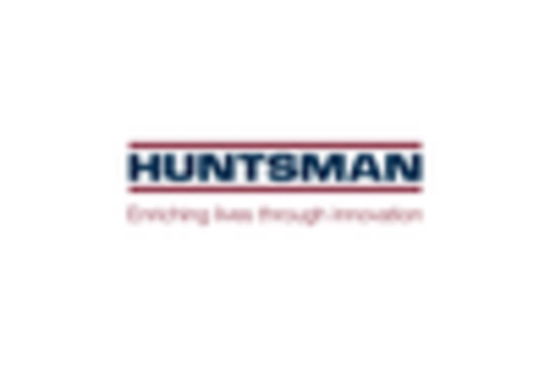
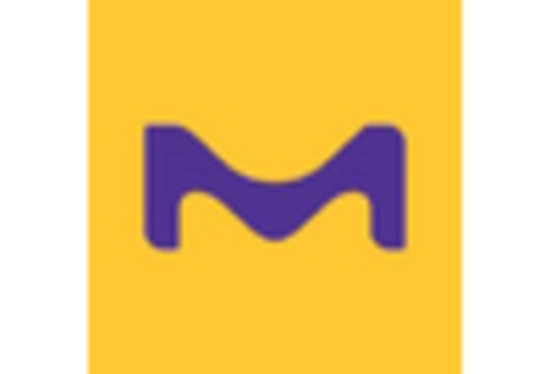
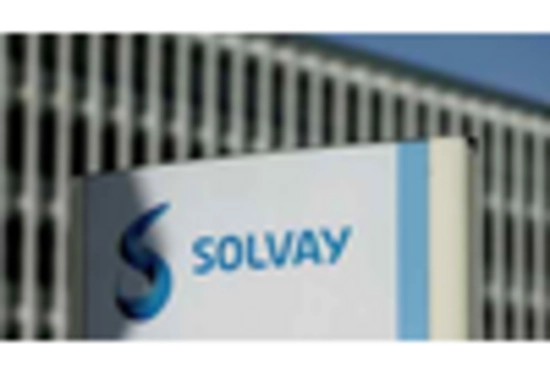


Leave a Comment